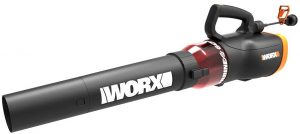Table of Contents
Introduction
Leaf blowers are very popular and are known as a useful garden tool. They power through leaf clearing, thus helping you maintain your gardens at home or your commercial spaces. The effectiveness of leaf blowers can be remarkable. They maximize your ability to effectively clear out leaves while minimizing the work time, aches and pains that usually come with constantly bending down or squatting.
It is an interesting and helpful tool that is worth the investment. If you have ever been curious as to how they work, then you are about to find out. The process is easy to understand, and it will increase your appreciation for the tool.
Also see:
How long do electric leaf blowers last
Is a leaf blower worth the investment
The Science Behind Leaf Blowers
Leaf blowers make use of centrifugal force. Centrifugal force, also known as pseudo force is the energy produced when a rotating body moves fast enough to create force in nearby objects. It is also known as the force directed from the centre of an object towards the edge of the spinning object.
It has the same principle as a fan. If you place a fan to face the outside of your house, then the centrifugal force will circulate the air out of your home. The fan sucks up the air that was heating up inside the house and pushes it out so that fresh air can come in.
How Leaf Blowers Work
The gas and electric powered leaf blowers both use centrifugal force to operate. Inside a leaf blower, you will find a motor and a fan with spinning blades(also known as a compeller). When the leaf blower is turned on, the motor starts to run, and this spins the fan. As the fan is spinning, it draws in air from outside and spins the air before it then sends the air out through the tube attached to the machine. The air has to come out of the tube at high speed that reaches 250 mph sometimes.
Because the front of the tube is smaller than the back, the large volume of air that was sucked in is then pushed out forcefully to maintain the action of sucking in air and letting it out. This process creates excellent wind speed that easily clears the leaves from your yard.
Types Of Leaf Blowers
There are two types of leaf blowers, the gas powered and electric powered leaf blower. The gas-powered leaf blower is divided into two, the 4-cycle and 2-cycle versions while electric leaf blowers are either battery-powered or corded.
The gas-powered leaf blowers usually produce more power, and this makes them suitable for heavy duty jobs. Keep in mind that they are heavier, make more noise and cause pollution because of the emissions they release.
The electric models weigh less, are quiet and kind to the environment. But they do not have the same amount of power that the gas models offer. They are ideal for casual home use to clear small to medium sized properties.
Conclusion
When eaves begin to fall in preparation for winter, a leaf blower will be an invaluable tool to have. It will help you keep your lawn or garden clean and leaf-free without any stress. Knowing the basics of how leaf blowers work will help you choose the right leaf blower that meets your requirements.

